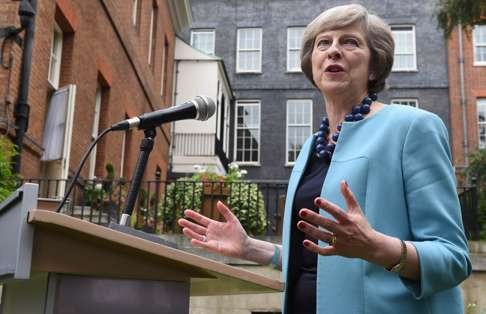
No margin for error as UK sets about sealing new trade agreements
Britain will launch a charm offensive as it tackles the ‘daunting task’ of rewriting trade deals in the post-Brexit world
When a majority of British voters opted on June 23rd to have less to do with foreigners, they ushered in a prolonged and costly period of economic and political uncertainty.
Like most divorces, the degree of difficulty Brexit encounters will be determined to a large degree by how much goodwill parties bring to, and generate at, the table.
Revamping trade policy is a large component of the extrication process. Currently, the UK is part of a customs union and single market inside the European Union.
The WTO is the legal bedrock for international trade, but is not at the cutting edge of freer markets
The customs union unites its members in a uniform external trade policy with the rest of the world. The single market ensures the four freedoms – freedom of movement of goods, services, capital and labour, albeit with some exceptions.
If Brexit means Brexit, as Prime Minister May has said, maintaining the customs union is out of the question. Alternatives include a free trade area or default to the World Trade Organization.
A free trade agreement would mean a more distant relationship with the EU because unrestricted access would require proof that products originate in the preferential area. These rules of origin impose a non-trivial cost on trade flows.
What of the single market? All or part of it could be maintained between the UK and EU in a free trade agreement. One possibility is the so-called Norwegian option, allowing single market access to nations within the European Economic Area (Norway, Iceland and Liechtenstein).

But this access entails acceptance of free movement of people and contributions to the EU budget. Stemming immigration and ceasing EU budget payments were core elements of the leave campaign’s call to take the country back. That complicates the Norwegian option.
Any attempt to trade market access against free movement under this option would be difficult because of the precedent it would create. Several EU member states face separatist parties.
The European Economic Area is in effect a free trade agreement, and other less integrating free trade areas are also possible. The Canada-EU free trade agreement, negotiated but not ratified, is a softer integrating option. Goods trade is free, services less so, with little else by way of a single market.

Failing preferential arrangements to replace EU membership, the most drastic exit strategy is reversion to WTO relations, the lowest common denominator in terms of access commitments. With certain exceptions, the WTO guarantees non-discriminatory trade relations among its 164 members - commonly referred to as most-favoured-nation treatment.
The WTO is the legal bedrock for international trade, but is not at the cutting edge of freer markets. The UK is a member of the WTO in its own right and the essential task is to restate its rights and obligations as an entity outside the EU. This will have to be done anyway, irrespective of whether the UK and EU establish preferential arrangements to replace the EU.
The WTO can be a flexible institution, but giving rein to pragmatism will be hostage to the degree of goodwill the UK can generate among its trading partners.
Good sense, humility and the abandonment of amateur hour will be essential ingredients of success
Sole reliance on the WTO to articulate EU-UK relations would be economically damaging. As Alan Winters and Jim Rollo of Sussex University point out in a recent paper, 16 per cent of UK exports to the EU would face import tariffs of 7 per cent, and the rate for cars is 10 per cent.
The UK will also need to work out arrangements with third parties that have preferential relationships with the EU. Dozens of these agreements are in force. The best approach would probably be to seek to replicate these as part of the UK’s national trade policy.
Finally, for economies with which the EU currently has most-favoured-nation relations under the WTO, including the United States, China, most of Asia, Australia and New Zealand, and much of Latin America, interesting opportunities exist for cutting preferential deals. But this can only be done when the UK is out of the EU customs union.
The task facing the UK is daunting. Much rides on it. Good sense, humility and the abandonment of amateur hour will be essential ingredients of success.
Patrick Low is a fellow at the Asia Global Institute of the University of Hong Kong

